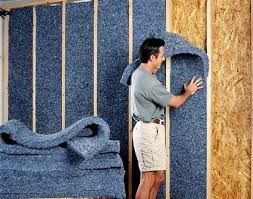With the arrival of summer and **extreme temperatures**, many homes and buildings become stifling spaces due to the accumulation of **heat in roofs and walls**. This is due to the high **thermal transmittance** of certain construction materials, which favors the entry of heat in summer and heat loss in winter. As a consequence, **cooling and heating systems** must work more intensely, increasing **energy consumption** and raising electricity costs.
For instance, **air conditioning** consumes approximately 690 Wh per hour. However, with **good thermal insulation in roofs and walls**, the use of air conditioning could be **reduced to just 15 or 20 minutes per hour**, achieving the same level of comfort but with significant energy savings.
According to studies, **heat enters a home mainly through the roof** (40%), followed by walls (30%) and the floor (10%). Therefore, a home without adequate thermal insulation resembles an oven, making it difficult to regulate the internal temperature.

## The importance of good thermal insulation
To ensure a cooler and more comfortable environment during summer, it is essential to **use materials with low thermal transmittance in the construction or renovation of homes**. “In any project, it is essential to choose efficient insulating materials. Otherwise, heat will pass through the walls and increase the interior temperature,” explained Federico García Zúñiga, technical consultant of Andima, National Association of Insulating Materials Industries.
According to the specialist, **efficient thermal insulation can reduce energy consumption by up to 35%** and achieve savings of up to 70% on air conditioning bills.
## Recommended materials for a cool home
The most efficient materials for thermal insulation include **glass wool, expanded polystyrene, and polyurethane**. “These materials form a ‘third skin’ for people, protecting them from external heat and maintaining a pleasant temperature for longer,” added García Zúñiga.
Investing in thermal insulation not only improves comfort inside the home but also **contributes to energy savings and environmental sustainability**, reducing the impact of excessive use of air conditioning systems. With appropriate measures, it is possible to cope with heat waves more efficiently and economically.

## What are the benefits of thermal insulation?
The thermal insulation has many benefits, including:
– **Energy savings**: Reduces heat loss in winter and incoming heat in summer.
– **Economic savings**: Reduces electricity and gas expenses.
– **Comfort**: Maintains a stable and pleasant indoor temperature throughout the year.
– **Protection against humidity**: Reduces condensation and moisture, reducing the risk of mold.
– **Sound insulation**: Some thermal insulation materials also provide sound insulation.
– **Environmental care**: Reduces CO2 emissions.
– **Safety**: In case of fire, thermal insulators allow people in the building to remain in safe spaces.
Some materials that can be used as thermal insulation are:
– Mineral wool
– Plastic foams
– Used paper
– Sheep wool
– Straw
– Natural cork
– Fiberglass
When choosing an insulating material, **it is important to consider its conductivity**, density, chemical stability, structural rigidity, or degradation.
Source: ANdiMA.
**[Subscribe to our YouTube channel!](https://www.youtube.com/channel/UCrYLIWysAyv4m833zGAQ02g)**

